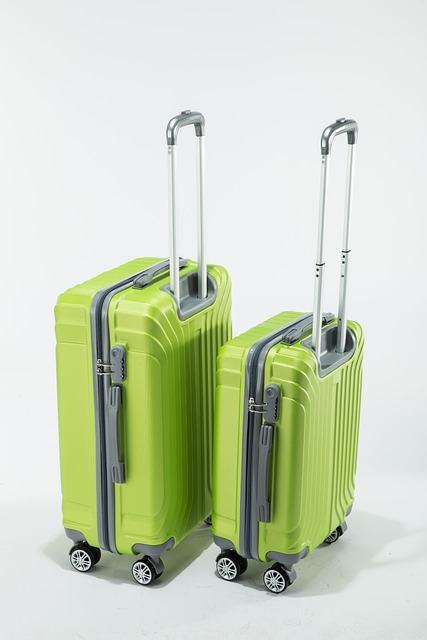Identify local animal shelters and rescue organizations for pet safety during evacuations. Prepare bug-out bags with food, water, meds, toys, carriers, and identification. Check local guidelines, create kits tailored to pets' needs, and stay informed. Regularly practice evacuation drills, stress-intro exercises, and bond through preparation.
Discovering safe haven for your furry friends during emergencies is crucial. This guide equips pet owners with essential knowledge on securing emergency shelter options in their area. We explore strategic steps, from identifying local animal shelters and rescue organizations to packing indispensable bug-out bags for pets. Learn about evacuation procedures, temporary housing alternatives, and networking with pet-friendly services. By implementing these measures, you’ll be better prepared to ensure your pets’ safety during unforeseen events.
- Identify Local Animal Shelters and Rescue Organizations
- Prepare Bug-Out Bags for Pets: Essential Items
- Understand Evacuation Procedures in Your Area
- Explore Temporary Housing Options for Pets
- Network with Pet-Friendly Emergency Services
- Practice Emergency Drills with Your Pets
Identify Local Animal Shelters and Rescue Organizations
When preparing for emergency evacuations, ensuring your pets’ safety should be a top priority. A crucial step in pet evacuation preparedness is identifying local animal shelters and rescue organizations that can provide shelter and care during crises. These facilities often serve as safe havens for animals displaced by natural disasters or other emergencies.
Many communities have established animal shelters equipped with the resources to accommodate and care for pets until they can be reunited with their owners or adopted into new homes. Additionally, volunteer-driven rescue organizations play a vital role in pet-care during emergencies, often distributing bug-out bags for pets and animals-in-disaster-kits containing essential supplies like food, water, medication, and identification documents. To find local resources, search online or check with your city’s emergency management office; they can direct you to nearby shelters and organizations such as ours at animal-survival-packs, dedicated to ensuring the well-being of pets in disasters.
Prepare Bug-Out Bags for Pets: Essential Items
Preparing Bug-Out Bags for Pets is an essential step in ensuring your furry friends are safe during emergency evacuations. These bags should contain all the necessary items to sustain them until they reach a secure location. Include high-quality pet food and water, as well as bowls designed to prevent slipping. Pack any medications your pet requires, along with a copy of their veterinary records. Don’t forget essentials like waste cleanup materials, grooming tools, and identification tags with updated contact information.
Consider adding specialized items tailored to your pet’s unique needs, such as a favorite toy or blanket for comfort. For pets with specific dietary requirements, include alternative food sources. In the event of natural disasters, animals-in-disaster-kits can prove invaluable; visit us at traveling-pet-first-aid anytime to learn more about disaster-kits-for-pet-parents and pet-evacuation-preparedness. Ensure your bug-out bags are easily accessible and familiar to both you and your pets.
Understand Evacuation Procedures in Your Area
Understanding evacuation procedures is a crucial part of preparing for emergencies and ensuring your pets’ safety. Different areas have specific plans in place, so it’s essential to know what to expect and how to navigate the situation with your furry friends. Start by checking with your local government or emergency management agency to learn about their guidelines for pet evacuations. They may provide information on designated emergency shelters or safe havens where pets can be temporarily housed during a crisis.
Creating a well-stocked bug-out bag for your pets is a vital step in being prepared. This bag should include essential supplies like food, water, and any necessary medications. Don’t forget to pack a few of their favorite toys to help reduce stress. When assembling the bag, consider what tools might be useful during an evacuation. For instance, a portable pet carrier or leash could make transport easier, while a first-aid kit tailored for pets can provide much-needed care in case of injuries. Give us a call at pet-care-during-emergency if you need assistance preparing your bug-out-bag-must-haves-for-pets and ensuring you’re ready for any emergency with your beloved animals.
Explore Temporary Housing Options for Pets
In times of emergencies, having a well-prepared bug-out bag for your pets is crucial for their safety and smooth evacuation. Temporary housing options for animals play a vital role in such scenarios, especially when you might need to leave quickly. These can include pet-friendly shelters or temporary boarding facilities that offer respite during crises. Many communities have established emergency response plans that include provisions for animals, so exploring these local resources is essential.
When putting together a bug-out bag for your furry companions, think about the bug-out-bag-must-haves-for-pets like food and water, medical supplies, and comfort items. Ensure it’s easily portable and tailored to your pet’s specific needs. For instance, cats and dogs might require different types of emergency kits considering their unique behaviors and health considerations. Visit us at bug-out-bag-essentials-for-cats-dogs preparation-for-pet-evacuations anytime to learn more about creating a comprehensive plan that covers all your pet’s bug-out-bags-pets essentials.
Network with Pet-Friendly Emergency Services
When preparing for any emergency situation, having a bug-out bag for your pets is an essential part of emergency-pet-supplies and disaster-kits-for-pet-parents. These kits should include all necessary animal-in-disaster-kits items such as food, water, medications, and identification. Ensure you have enough supplies to sustain them for at least 72 hours in case of an evacuation.
Networking with local pet-friendly emergency services is another vital aspect of pet-evacuation-preparedness. Give us a call at pet-safety-during-evacuations to learn about shelters, vet clinics, and other resources available in your area. Staying informed allows you to make quick decisions during an emergency, ensuring the safety and comfort of your furry family members.
Practice Emergency Drills with Your Pets
Emergency preparedness for pets isn’t just about having a safe space; it’s about ensuring your furry companions are ready and secure during unexpected events. One crucial aspect is incorporating regular emergency drills into your routine, treating it as you would a normal walk or meal time. Start by familiarizing them with the sound of sirens or emergency vehicles to reduce their stress levels during actual emergencies. Gradually, simulate evacuation scenarios, encouraging them to enter their carrier or crate calmly, and practice exiting the house quickly. This preparation goes hand in hand with packing bug-out bags for pets—essential components include food, water, medications, and a well-stocked first aid kit tailored for your pet’s needs.
Remember that these drills are not just about evacuations; they enhance overall pet safety during emergencies. They can also help you identify potential issues, such as anxiety or difficulty with carriers, allowing you to address them before time becomes a factor. So, prepare your bug-out bag essentials for cats and dogs, keep it easily accessible, and ensure everyone in the household knows its contents and where to find it. Have regular practice sessions and treat these drills as an opportunity to strengthen your bond with your pets while ensuring they’re travel-ready and safe when faced with any emergency evacuation scenarios.
Ensuring your pets’ safety during emergencies is paramount. By identifying local animal shelters and rescue organizations, preparing bug-out bags with essential items, understanding evacuation procedures, exploring temporary housing options, networking with pet-friendly emergency services, and practicing emergency drills, you’re better equipped to navigate unpredictable situations. Remember, preparation is key in safeguarding your furry friends. Start today to create a safe haven for your pets during times of crisis.





